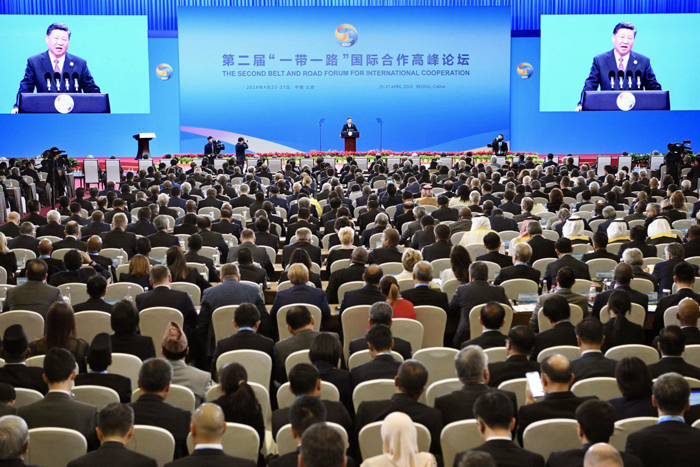
(TibetanReview.net, Apr30’19) – China has concluded its 2nd Belt and Road Forum (BRF) in Beijing on Apr 27 with signing of deals worth USD 64 billion but minus the Bangladesh, China, India, Myanmar Economic Corridor (BCIMEC) it had originally listed in its multi-billion dollar Belt and Road Initiative (BRI) projects following India’s continued boycott of the event.
A total of 37 heads of state and government took part in the high-profile forum which affirmed that the BRI would respect the sovereignty and territorial integrity of countries. India again boycotted the forum by contending that the China-Pakistan Economic Corridor (CPEC), a BRI undertaking, takes place over its Pakistan occupied Kashmir region.
The list of BRI projects in the South Asian region is now made up of the CPEC, “the Nepal-China Trans-Himalayan Multi-Dimensional Connectivity Network, including Nepal-China cross-border railway” and the China-Myanmar Economic Corridor (CMEC).
The BCIMEC was previously mentioned as part of BRI when it was launched in 2013. But now it does not figure in the list of 35 corridors mentioned in the new list of projects under the BRI.
China has for long persisted with its efforts to get India to join the BRI, even producing a map ahead of the 2nd BRF showing J&K and Arunachal Pradesh as parts of India. However the map was withdrawn reportedly after reports emerged that the map misrepresented China’s stated position on this issue and once it became clear the India would have nothing to do with the 2nd edition of the BRF as well.
The 2800-km BCIMEC proposes to link Kunming, capital of China’s Yunnan province, with Kolkata, passing though nodes such as Mandalay in Myanmar and Dhaka in Bangladesh before heading to Kolkata.
The 1700-km CMEC would provide China another node to access the Indian Ocean. The corridor will run from Yunnan Province of China to Mandalay in Central Myanmar. From there it will head towards Yangon, before terminating at the Kyaukpyu Special Economic Zone (SEZ) on the Bay of Bengal.
And the Nepal-China Trans-Himalayan connectivity network starts from Chengdu, capital of China’s Sichuan Province, from where it is linked to Tibet by the existing Sichuan-Tibet Highway, or the upcoming Sichuan-Tibet Railway.
It is also part of the BRI proposals that the railway from Tibet be further extended to Nepal’s capital Kathmandu, via Ya’an in China and Qamdo (Chamdo), Lhasa and Shigatse in Tibet.
Chinese President Xi Jinping has said in a statement to the media after his round table meeting with world leaders that a total of 283 items of practical outcomes had been achieved during the preparatory process and the holding of the forum.





